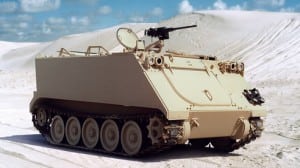
The Government Accountability Office (GAO) looked at the Army’s rationale for waiving the competitive prototyping requirement for the Armored Multi-Purpose Vehicle (AMPV) program, and found it “sound.” The Army could have more fully evaluated potential benefits associated with reducing developmental risks, but “its decision not to pursue prototyping for the AMPV program appears sound,” the April 25 report said. “Recognizing that the intent of competitive prototyping is to reduce cost and risk, the Army has taken other actions that could…













